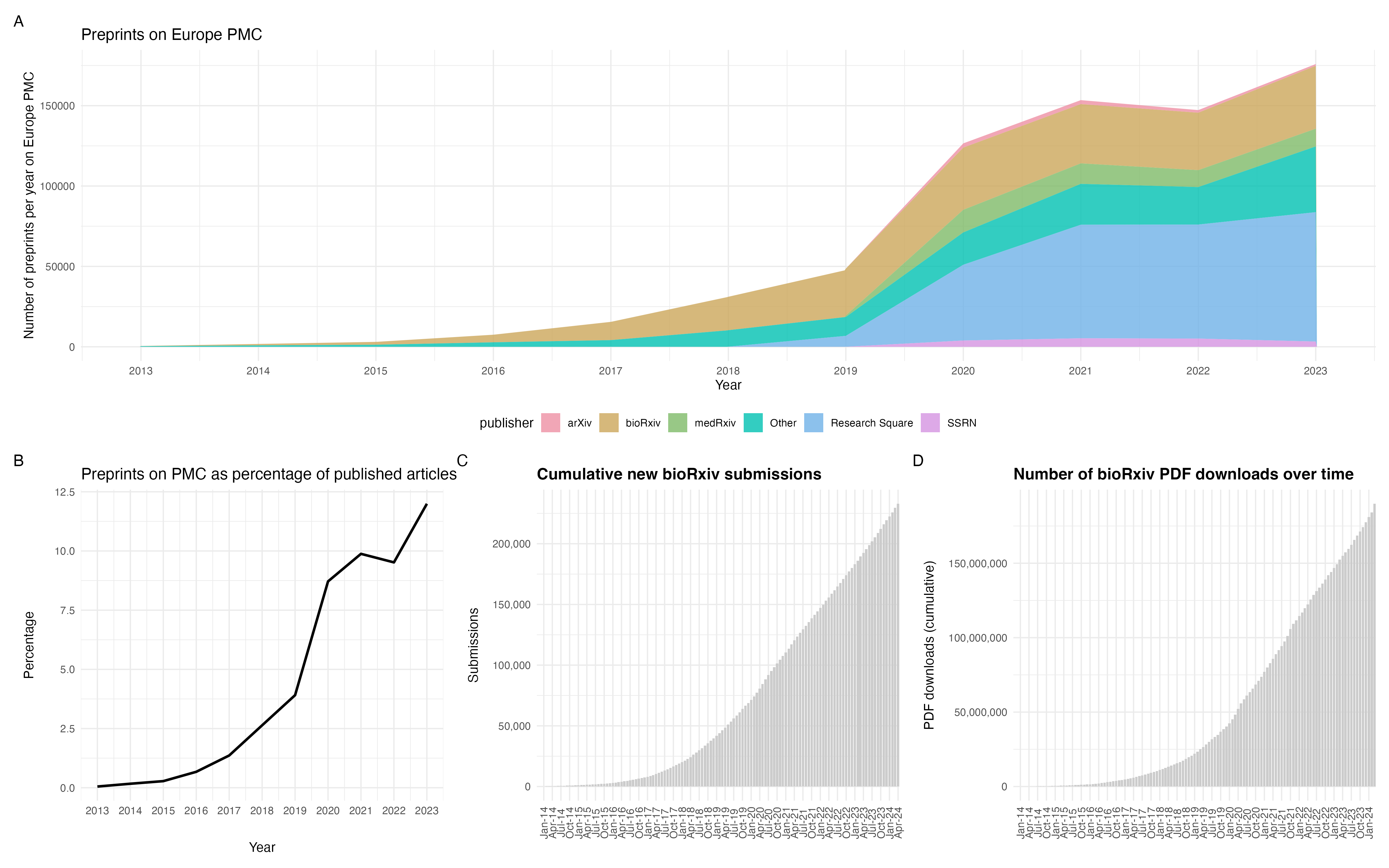Developing preprints in developmental biology
Posted by jonny coates, on 17 May 2024
Authors: Sandra Franco-Iborra (ASAPbio Community Lead), Pablo Ranea-Robles (Postdoctoral Fellow, Novo Nordisk Foundation Center for Basic Metabolic Research at the University of Copenhagen), Lonni Besancon (Assistant Professor, Linköping University) & Jonathon Alexis Coates (Assoicate Director, ASAPbio; jonny.coates@asapbio.org)
Scientific publishing is experiencing a reckoning; scientists are resigning across a wide range of editorial boards, the dominance of traditional publishers has been successfully challenged, open access has revolutionized publishers’ business models, there’s a lack of trust in science and preprints are on the rise. Preprints (manuscripts shared prior to journal-organised peer review) offer an opportunity to transform scholarly communication into a system that places science and society first in addition to alleviating many of the issues we currently face.
Brief history of preprints in the life sciences
Although the fields of physics and mathematics are often credited as the origins of preprinting, the practice actually began in the 1960’s with biology focussed NIH information exchange groups (IEGs). However, this initiative faced opposition from publishers and scientific societies who effectively ended the IEGs by 1969. In 1991, arXiv launched and the physics community rapidly adopted preprinting. It was not until the launch of bioRxiv in 2013 that biology began to accept preprints. More recently, some funders such as the Chan Zuckerberg Initiative and Bill & Melinda Gates Foundation have begun to mandate preprints. We’ve also witnessed governmental declarations that support a not-for-profit, no cost to authors or readers system of academic publishing; a system that has preprints at the beating heart. There are now over 750,000 life science preprints (Fig 1A), representing approximately 12% of the literature in 2023 (Fig 1B). Of these 750,000, over 220,000 are hosted on bioRxiv alone (Fig 1C) and have been downloaded over 150 million times (Fig 1D).

Preprints in Developmental Biology
With the launch of bioRxiv in 2013, Developmental Biology was quick to adopt this new method of scientific communication, posting preprints that same year. As of 2023, Developmental Biology sits in the middle of preprints on bioRxiv, as the 15th largest field with almost 6700 total preprints posted (Fig 2A). This is also true in terms of preprint downloads where Developmental Biology preprints are downloaded slightly less than the mean for bioRxiv. Approximately ~70% of bioRxiv preprints are eventually published, with our data showing that at least 54% of Developmental Biology have been published by the end of 2023 (though this number is likely to be higher due to issues linking preprints to the published version). Additionally, many Developmental Biology preprints are posted with restrictive licenses with only 17% having an open, CC-BY license (Fig 2B). However, this is very similar to the larger bioRxiv corpus where only 18% of preprints have a CC-BY license. Similarly, most Developmental Biology preprints are posted as a single version which negates the benefit of being able to iteratively update a preprint (Fig 2C). Within the field, the University of Cambridge (UK) is one of the largest contributors of preprints, having contributed over 100 Developmental Biology preprints to bioRxiv since 2013.
Interestingly, despite being in the middle of the pack in terms of preprint posting, Developmental Biology is the second biggest category for number of preLights posted (>350). preLights (a preprint highlighting service from CoB) is a platform in which ECRs write news & views style articles of preprints. This highlights the benefits of a strong community-led curation and demonstrates how this can work for other platforms.

Develop your use of preprints
Preprints serve multiple purposes. First, they help to shift the power dynamic in academic publishing, placing the power back in the hands of authors. This helps to accelerate the dissemination of scientific knowledge, free from the pressures and delays associated with publishing. The benefits of this open, accelerated system were highlighted during the COVID-19 pandemic when almost 40% of the initial COVID-19 related research was first shared as preprints, directly leading to changes in policy and potentially saving lives. Preprints can appear online within 48 hours of submission, compared to months and years under traditional publishing routes. This also proves particularly useful to publicly rebut published research and avoid the long delays of scientific corrections or the rather unused platforms for post-publication peer review
Preprints also decouple the quality of research from metrics like journal impact factor, promoting fairer, better, evaluation. They also provide a platform for early-career researchers to showcase their work and gain recognition, fostering a more inclusive and diverse research landscape. Additionally, preprints can be used iteratively to share ongoing research and get feedback from the community. However, perhaps the most important benefit of preprints is that they offer a viable route towards meaningful change to scientific communication; one that is free from financial incentives and pressure and that is community-focussed.
The best way to get started with preprints is to use them in your research by citing and reading them. The Node maintains “In preprints” which is a great series for discovering relevant Developmental Biology preprints each month. Going further, you could also discuss preprints in your journal club – or even review them on platforms like PREreview or hypothes.is with support from ASAPbio. For ECRs, preLights is an excellent opportunity to take your first steps into commenting on preprints.
Ready to develop how you share your research, amplify your voice, and contribute to a more open, Developmental Biology community? Grab our checklist (Box 1), explore resources, and join the preprint movement!
Box 1. How to get started with preprints?
- Read (& cite) a preprint
- Discuss a preprint at your next journal club or join/create a preprint review journal club
- Review a preprint or write a preLights article to highlight a preprint
- Curate a list of preprints on sciety or as part of your society
- Post a preprint when going to conferences or before submitting your next manuscript to a journal


 (No Ratings Yet)
(No Ratings Yet)